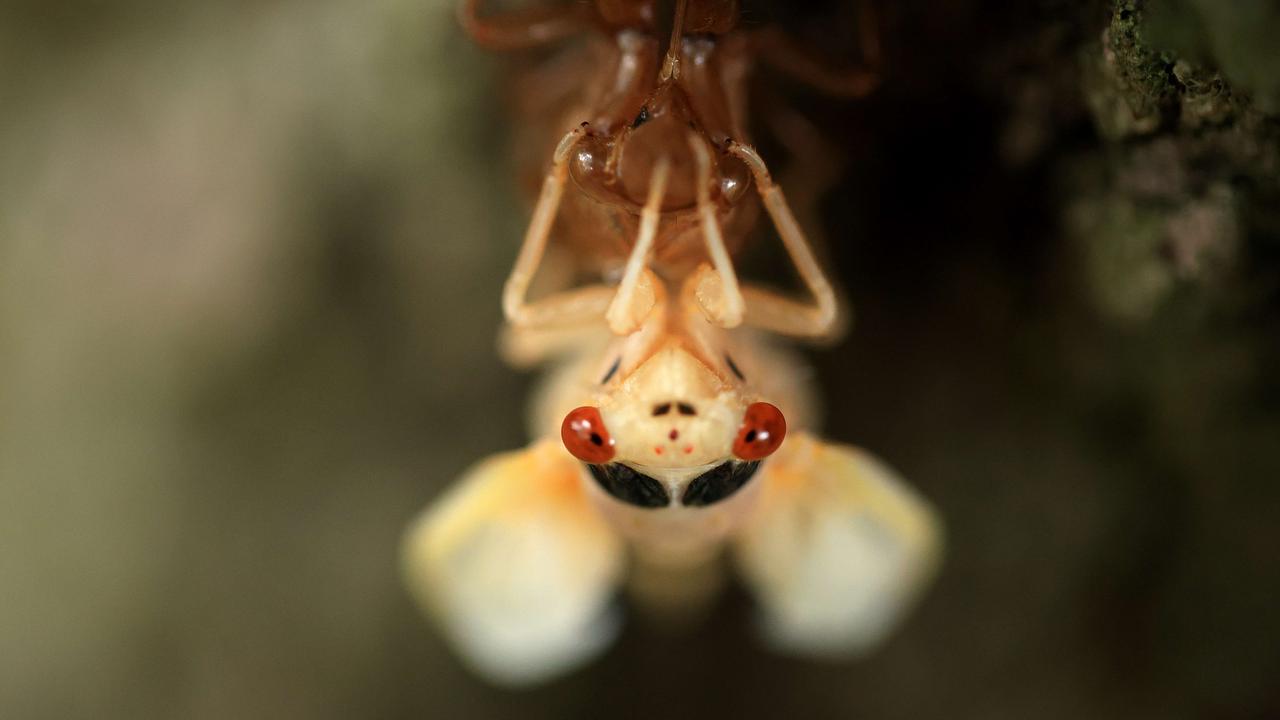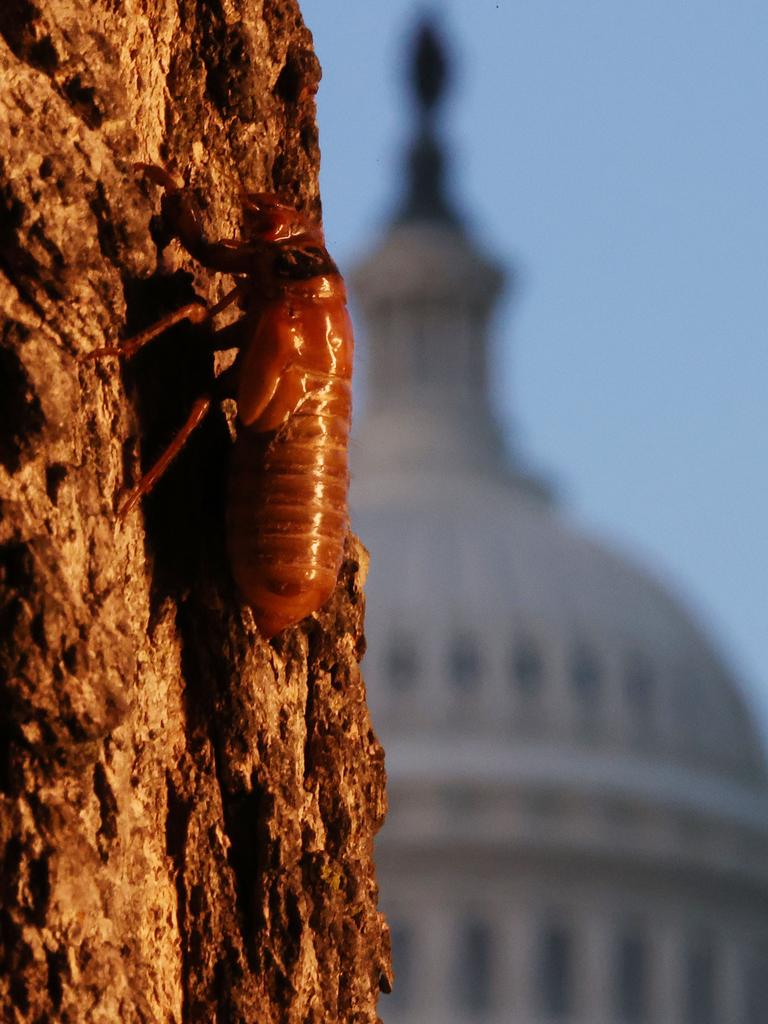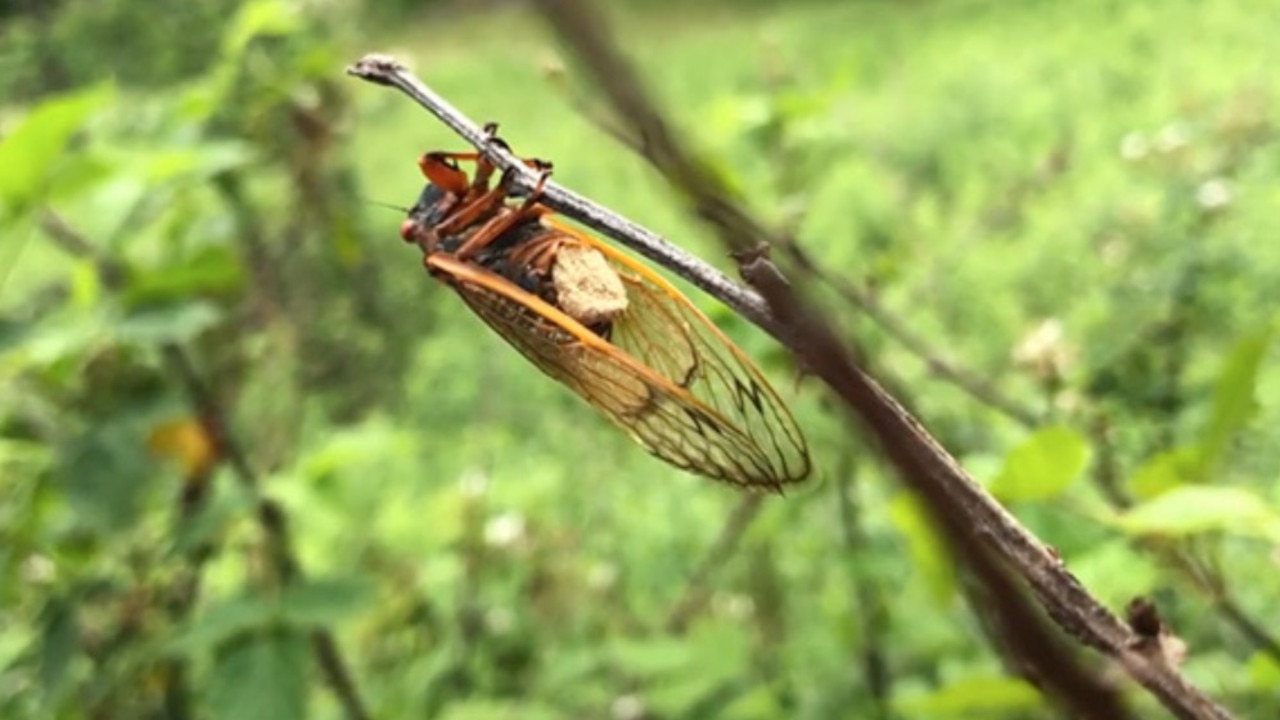Weird facts: plague of ‘zombie’ periodical cicadas about to hit US
Two regions in the US are about to be overtaken by trillions of noisy periodical cicadas in the biggest plague since 1803 – but why are these so-called ‘champions of pee’ turning into zombies?

READING LEVEL: ORANGE
Alien-like creatures have been lurking below the ground in two parts of the US for more than a decade – now they’re about to surface in an event scientists have called “cicada-geddon.”
Known as periodical cicadas, the noisy insects live underground as nymphs for 13 to 17 years, feeding on the xylem of tree roots before crawling through the surface in plague-like proportions.
Two broods of periodical cicadas are expected to take over the landscape simultaneously in the hundreds of trillions – numbers that haven’t been seen since Thomas Jefferson was the American president in 1803.
Brood XIX have been living underground in North America’s southeast for the past 13 years, while Brood XIII has been underground for 17 years in the midwest state of Illinois. Both broods are expected to result in trillions of cicada nymphs crawling out from under the ground to attach themselves firmly to tree trunks. Once they are ready, swarms of winged cicadas will emerge from their exoskeletons to feed, mate and lay eggs over a 20-25 day period before dying.

The periodical cicadas that are about to infest two parts of the United States have plenty of interesting and weird facts about them.
The insects have been found to be the strongest urinators in the animal kingdom with flows that put humans and elephants to shame. They also have pumps in their heads that pull moisture from the roots of trees and are at risk of a disease that turns them into zombies.
WEIRD FACTS ABOUT PERIODICAL CICADA
Unlike their Australian cousins, which live underground as nymphs for six to seven years, North American periodical cicadas survive for 13-17 years by feasting on the tissue called xylem, which is found in the roots of trees and plants.
Xylem carries mostly water and a bit of nutrients. It’s not easy to get into the xylem, which doesn’t just flow out when a bug taps into it because it’s under negative pressure. The cicada can get the fluid because its head has a pump, said University of Alabama Huntsville entomologist Dr Carrie Deans.

They use their proboscis like a tiny straw — about the thickness of a hair — with the pump sucking out the liquid, said Georgia Tech biophysics Assistant Professor Saad Bhamla. They spend nearly their entire lives drinking, year after year.
“It’s a hard way to make a living,” Dr Deans said.
CHAMPIONS OF PEEING
All that watery fluid has to come out the other end. And boy, does it ever.
In March, Assoc Prof Bhamla published a study of the urination flow rates of animals across the world. Cicadas were clearly the champs of peeing, with their wee coming out two to three times stronger and faster than that of elephants and humans.
While Assoc Prof Bhamla couldn’t study the periodical cicadas that mostly feed and pee underground, he used video to record and measure the flow rate of cicadas living in the Amazon rainforest and found out the insects peed at a rate of three metres per second.
They have a muscle that pushes the waste through a tiny hole like a jet, Assoc Prof Bhamla said. When trekking through the Amazon he found a tree the locals called a “weeping tree” because liquid was flowing down, like the plant was crying.
But it turned out the liquid was cicada pee.

“You walk around in a forest where they’re actively chorusing on a hot sunny day. It feels like it’s raining,” said University of Connecticut entomologist, Associate Professor John Cooley. “That’s their honeydew or waste product coming out the back end … It’s called cicada rain.”
ZOMBIE CICADAS
But wait – there’s more. There’s a fungal disease, transmitted during mating, that turns cicadas into zombies and causes their reproductive organs to fall off, Assoc Prof Cooley said.
It’s a real problem that “is even stranger than science fiction,” he said.
He has seen areas in the Midwest of the US where up to 10 per cent of the individuals were infected.

The white fungus takes over the male, causing their reproductive organs to be torn from their body. At the same time, chalky spores are spread around to other nearby cicadas, Assoc Prof Cooley said. The insects are made infertile, not killed, and the disease is spread to other male cicadas as the infected one roams around under the control of the mind-altering fungus.
“They’re completely at the mercy of the fungus,” Assoc Prof Cooley said. “They’re walking dead.”
According to Assoc Prof Cooley, the fungus even has hallucinatory effects on birds that eat the infected cicada.
POLL
GLOSSARY
- nymphs: a younger version of an insect that will transform into the adult form
- xylem: plant tissue that transports water and nutrients from the roots up to the leaves
- exoskeleton: a hard covering on the outside of a creature that protects the creature’s body
- brood: the young of an animal or a group of creatures born around the same time
- hallucinatory effect: it makes the creature see or hear things that aren’t really there
- proboscis: a long sucking mouth piece
- infertile: unable to reproduce
EXTRA READING
Trillions of Brood X cicadas about to hatch
Loud, giant insect hatches after years underground
Insect wings inspire food safety solution
QUICK QUIZ
1. How long do periodical cicadas live underground as nymphs?
2. What do they use to tap into the xylem of tree roots?
3. How are some periodical cicadas turning into “zombies”?
4. Why are cicadas known as champions of pee?
5. What parts of the US will soon experience a plague of cicadas?
LISTEN TO THIS STORY
CLASSROOM ACTIVITIES
1. Cicada-geddon true or false
Answer true or false to the following questions in the Kids News article. Re-read over the article to check your answers.
a) Periodical cicadas live underground for 15-20 years? T/F
b) A fungus can cause their reproductive organs to fall off? T/F
c) The cicadas feed, mate and lay eggs for a 50 day period before dying? T/F
d) This number of cicadas hasn’t been seen since 1803? T/F
e) Cicadas pee at a rate of 5 metres per second? T/F
Time: allow 15 minutes to complete this activity
Curriculum Links: English, Science, Personal and Social, Critical and Creative Thinking
2. Extension
Considering they only live for 20-25 days after appearing, how will this plague of trillions of cicadas affect humans and the environment around them?
Time: allow 10 minutes to complete this activity
Curriculum Links: English, Science, Personal and Social, Critical and Creative Thinking
VCOP ACTIVITY
Read this!
A headline on an article – or a title on your text – should capture the attention of the audience, telling them to read this now. So choosing the perfect words for a headline or title is very important.
Create three new headlines for the events that took place in this article. Remember, what you write and how you write it will set the pace for the whole text, so make sure it matches.
Read out your headlines to a partner and discuss what the article will be about based on the headline you created. Discuss the tone and mood you set in just your few, short words. Does it do the article justice? Will it capture the audience’s attention the way you hoped? Would you want to read more?
Consider how a headline or title is similar to using short, sharp sentences throughout your text. They can be just as important as complex ones. Go through the last text you wrote and highlight any short, sharp sentences that capture the audience.

